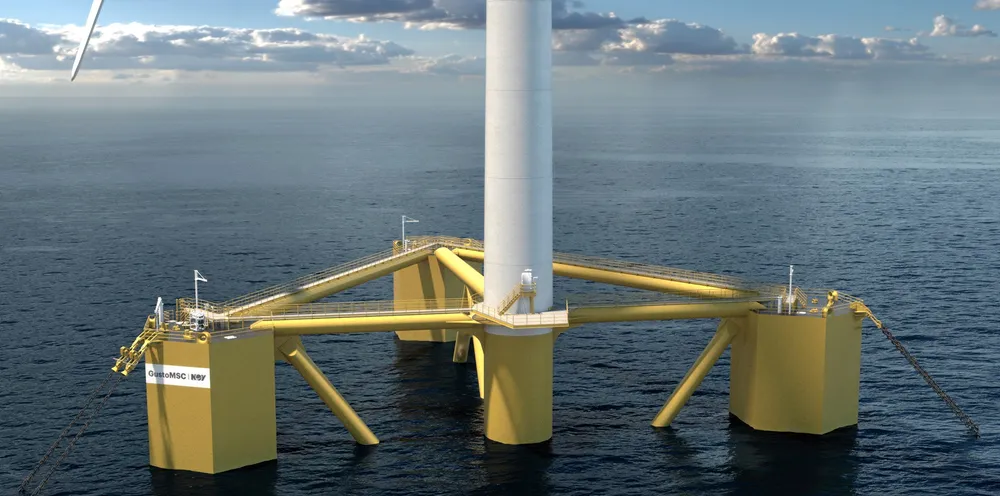Dutch floating wind pioneer GustoMSC platform design stamped 'bankable' by DNV
Modular semisubersible design gets technical and commercial assessment greenlight from classification body as offshore oil veteran starts diversification into new market

Dutch marine engineers GustoMSC’s Tri-Floater floating wind concept has been given DNV’s stamp of approval as “bankable”, moving the modular triangular platform a key step closer to market.
The ‘concept verification and technical and commercial assessment’ of the semisubmersible design, which has been devised for 15MW-plus nameplate turbines, ranged over an “evaluation of [the Tri-Floater] with regards to fabrication, transport, installation and operation phases”, said pair said in a statement.
Barend Jenje, GustoMSC’s floating wind division commercial director, said: “Having successfully completed DNV’s reviews brings us closer to exploit the potential of floating wind and its key contribution to affordable, reliable, sustainable and modern energy for all,” said .
He added that the contractor’s long track-record developing floating platforms for the offshore oil & gas industry, meant it was “particularly well-positioned to contribute to the successful development of this new technology”.
“The completed technical and commercial assessment is an overall review of the concept from a ‘bankability’ perspective, taking into account evaluation of the concept with regards to fabrication, transport, installation, and operation phases,” said GustoMSC in a statement.
Jenje highlighted that the “in-house capabilities” at GustoMSC in bringing the Tri-Floater to market and into first projects would be helped by parent company, energy industry giant NOV’s “track-record in developing and delivering large-scale, complex industrial projects and has transferable in-house experience from mooring and electrical cabling”.